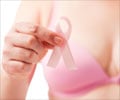Advanced technologies like wearables, smart mats, computer vision, and smartphone apps are offering personalized and interactive experiences for practitioners.
- Smart yoga mats embedded with sensors and AI, offer real-time posture feedback, personalized training, and data tracking for a tailored yoga experience
- Smartwatches and sensor-integrated yoga clothing can capture essential data like heart rate and movement, enhancing the monitoring and analysis of yoga sessions
- Apps and smart TV programs that utilize computer vision algorithms to analyze posture, provide interactive feedback, and enable remote supervision, making yoga accessible and engaging
Transforming Yoga with Technology
With the advent of smartphones and apps, anyone can now enjoy a terrific yoga session while staying in the comfort and safety of their own home. This has resulted in an increase in demand for online yoga, with content and apps sprouting up everywhere. Meeting programs like Zoom, Meet, and Webex, which were originally designed for corporate meetings, have evolved into a digital platforms for online yoga lessons. To some extent, these platforms have been successful in allowing yoga teachers to conduct virtual courses with students all over the world, as well as in increasing the visibility of quality teachers who can offer real information from India, the birthplace of yoga, to the West (1✔ ✔Trusted SourceRemote Delivery of Yoga Interventions Through Technology: Scoping Review
Go to source).
Although there has been an overwhelming demand for yoga content and teachers, the online class experience is non-interactive, non-personalized, and ineffective in meeting an individual's fitness/wellness goals, which would yield results only with consistent daily practice and motivation.
The aforementioned difficulties with existing solutions can be addressed by integrating cutting-edge advanced technologies such as Sensors, Wearables, Internet-of-Things (IoT), Artificial Intelligence (AI), Augmented/Virtual Reality (AR/VR), and so on (2✔ ✔Trusted Source
Yoga Meets Intelligent Internet of Things: Recent Challenges and Future Directions
Go to source).
Healthcare, and more especially, sports and fitness tech firms, have utilized modern technologies to improve health, maximize individual potential, and thereby contribute to the benefit of society.
Aside from yoga applications and wearables, consider how numerous innovations are promoting the ancient practice by integrating with current systems to bring a holistic wellness studio experience directly to an individual's house with comfort and safety.
Yoga Mats with Intelligence
Yoga mats with embedded sensors and artificial intelligence appear to be of greatest interest to yoga students, practitioners, and even expert trainers. A smart yoga mat combined with a companion mobile app and an optional wearable device (Apple Watch, Fitbit, etc.) is a potent combo for creating a tailored yoga experience depending on an individual's goals, physical limits, and other constraints. Smart yoga mats operate as on-the-go instructors, providing real-time feedback on posture alignment, pre/post session analysis, and recommendations for posture training via an AI system enabled by trainer's tips for an individual to achieve perfection through posture training. One can also keep track of their daily data, compete on the virtual community leaderboard, and share their success with others.Wearable Technology for Tracking Yoga Workout
Smartwatches:
Makers of smartwatches have expressed a strong desire to include "Yoga" workout tracker apps in their smartwatches, which capture basic movements in addition to crucial information such as heart rate, calories, and so on.Fashionable Clothes:
Yoga clothes are the latest trend, with sensors incorporated inside the garments to provide interactive feedback on posture alignment. Wearables like this are intended to work in conjunction with an app on your smartphone or tablet that receives and analyses data. That's right! Rather than embedding sensors into clothing, such as yoga pants, shirts, and even shoe inserts, these garments receive and translate sensor data and couple it with an app on your smartphone or tablet.Technology-Centric Yoga Apps with Posture Analysis
A few apps have shifted from being content-centric to being technology-centric, including posture analysis utilizing computer vision algorithms and the feed from smartphones' cameras.Enhancing Yoga Practice with Smart TV Apps and Computer Vision
Consider doing yoga in front of a television, watching the teacher perform a complex asana broken down into multiple steps, and a Smart TV app can track and enable you to learn and practice, or having a fun yoga challenge with a friend on the other side, with computer vision assessing each individual and awarding the best yogi with a badge. Consider the same scenario in a big class, with the teacher suddenly having the ability to remotely supervise student practice without the requirement for the teacher to be present.In summary, all technology solutions are geared toward meeting the growing need and demand of fitness and health-conscious consumers, meeting their wellness goals, enhancing their health and well-being, providing an intelligent platform to learn and maximize one's potential, by integrating workout routine into everyone's daily lifestyle, measuring the effectiveness of sessions toward individual goals, and are particularly useful for remote therapy applications. Technology solutions should also be developed to complement teachers' intellect and assist them in effectively guiding practitioners digitally, tracking their student's progress, and scaling and providing individualized attention.
References:
- Remote Delivery of Yoga Interventions Through Technology: Scoping Review - (https://pubmed.ncbi.nlm.nih.gov/35666562/)
- Yoga Meets Intelligent Internet of Things: Recent Challenges and Future Directions - (https://pubmed.ncbi.nlm.nih.gov/37106646/)
















